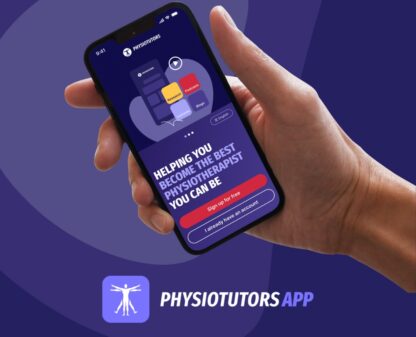Tension-Type Headaches

Introduction
- Headaches are a common symptom in patients with primary neck pain, with over 60% reporting concurrent headaches.
- Differentiated into primary (e.g., migraines, tension-type, cluster headaches) and secondary (caused by another condition, such as TMJ dysfunction or neck pain).
Epidemiology
- Tension-type headaches (TTH) are the most common form in adults worldwide, with a mean prevalence of 42%.
- TTH can be infrequent episodic, frequent episodic, or chronic.
Clinical Picture
-
Diagnosis requires at least two of the following – bilateral location, pressing/tightening quality (not pulsating), mild to moderate intensity, not aggravated by physical activity; no nausea/vomiting, and at most one of photophobia or phonophobia.
Examination
- Differences in provocation, cervical range of motion, neck muscle endurance, and forward head position compared to healthy controls.
- Provocation tests recreate familiar pain, indicating nociception in cervical structures. Watson test for referred pain
- Neck Flexor Endurance Test
- Flexion-Rotation Test for upper cervical rotation
- Assessment of Forward Head Posture (FHP).
Treatment
- Craniocervical Flexion Training (CCFT): Van Ettekoven et al. (2006) found CCFT combined with physiotherapy reduced headache frequency, duration, and intensity compared to physiotherapy alone.
- Manual Therapy (MT): Castien et al. (2011, 2013) showed MT, including spinal mobilization/manipulation, posture correction, and craniocervical exercises, significantly reduced headache frequency and improved cervical function.
- Isometric Neck Flexor Strength: Castien et al. (2015) correlated increased isometric strength of neck flexors with decreased pressure-pain thresholds, indicating reduced peripheral and central sensitization in chronic TTH patients.
- Manual Pressure Techniques (MTP): Demonstrated to decrease pain and increase upper cervical range of motion. Techniques target rectus capitis posterior major and upper cervical joints, providing nociceptive stimuli to reduce pain through neurological pathways.
References
Caneiro, J. P., O’Sullivan, P., Burnett, A., Barach, A., O’Neil, D., Tveit, O., & Olafsdottir, K. (2010). The influence of different sitting postures on head/neck posture and muscle activity. Manual therapy, 15(1), 54-60.
Castien, R. F., Van Der Windt, D. A., Grooten, A., & Dekker, J. (2011). Effectiveness of manual therapy for chronic tension-type headache: a pragmatic, randomised, clinical trial. Cephalalgia, 31(2), 133-143.
Castien, R., Blankenstein, A., Van Der Windt, D., Heymans, M. W., & Dekker, J. (2013). The working mechanism of manual therapy in participants with chronic tension-type headache. journal of orthopaedic & sports physical therapy, 43(10), 693-699.
Castien, R., Blankenstein, A., & De Hertogh, W. (2015). Pressure pain and isometric strength of neck flexors are related in chronic tension-type headache. Pain physician, 18(2), E201-E205.
Van Ettekoven, H., & Lucas, C. (2006). Efficacy of physiotherapy including a craniocervical training programme for tension-type headache; a randomized clinical trial. Cephalalgia, 26(8), 983-991.
Fernandez-de-Las-Penas, C., Alonso-Blanco, C., Cuadrado, M. L., & Pareja, J. A. (2006). Forward head posture and neck mobility in chronic tension-type headache: a blinded, controlled study. Cephalalgia, 26(3), 314-319.
Hall, T., Briffa, K., Hopper, D., & Robinson, K. (2010). Long-term stability and minimal detectable change of the cervical flexion-rotation test. journal of orthopaedic & sports physical therapy, 40(4), 225-229.
Hall, T. M., Briffa, K., Hopper, D., & Robinson, K. (2010). Comparative analysis and diagnostic accuracy of the cervical flexion–rotation test. The journal of headache and pain, 11(5), 391-397.
Harman, K., Hubley-Kozey, C. L., & Butler, H. (2005). Effectiveness of an exercise program to improve forward head posture in normal adults: a randomized, controlled 10-week trial. Journal of Manual & Manipulative Therapy, 13(3), 163-176.
Lee, C. H., Lee, S., & Shin, G. (2017). Reliability of forward head posture evaluation while sitting, standing, walking and running. Human Movement Science, 55, 81-86.
Mingels, S., Dankaerts, W., & Granitzer, M. (2019). Is there support for the paradigm ‘spinal posture as a trigger for episodic headache’? A comprehensive review. Current Pain and Headache Reports, 23, 1-8.
Nemmers, T. M., Miller, J. W., & Hartman, M. D. (2009). Variability of the forward head posture in healthy community-dwelling older women. Journal of geriatric physical therapy, 32(1), 10-14.
Ogince, M., Hall, T., Robinson, K., & Blackmore, A. M. (2007). The diagnostic validity of the cervical flexion–rotation test in C1/2-related cervicogenic headache. Manual therapy, 12(3), 256-262.
Olesen, J. (2018). International classification of headache disorders. The Lancet Neurology, 17(5), 396-397.
Stovner, L. J., Hagen, K., Jensen, R., Katsarava, Z., Lipton, R. B., Scher, A. I., … & Zwart, J. A. (2007). The global burden of headache: a documentation of headache prevalence and disability worldwide. Cephalalgia, 27(3), 193-210.


